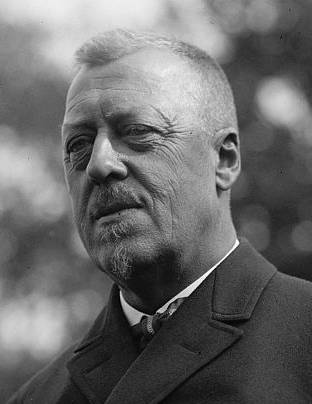Hugo Eckener Biography and Facts
Dr. Hugo Eckener (1868–1954) was the manager of the Luftschiffbau Zeppelin after the death of the Graf von Zeppelin, aeronautical engineer and the commander of the rigid airship “Graf Zeppelin”.
He was born in Flensburg from the father Johann Christoph Eckener from Bremen and mother Anna Lange, daughter of a shoemaker. While young, he was deemed an "indifferent student”, more interested in sports that in science but, under Professor Wilhelm Wundt, Eckener had earned a doctorate in experimental psychology "magna cum laude" by 1892. After earning a doctorate at University of Leipzig he joined the army in the Infantry Regiment 86 in Flensburg. He worked as a journalist and editor at the Flensburger Nachrichten. In October 1897 he married Johanna Maaß. He also worked as a correspondent for the Frankfurter Zeitung in 1905 and 1906.
In the time of first flights of Zeppelins LZ-1 and LZ-2 Eckner got an assignment to cover them for papers. He was very critical of both airships' performances (they did perform very badly), but praised Count Ferdinand von Zeppelin's dedication to his cause. Scientists and engineers of the time had criticized Count Ferdinand von Zeppelin's airship plans, so he wanted to talk with his critic. Eckener was so impressed by Count that on October 1908 he agreed to be a part-time publicist for the Zeppelin Company. His interested in airships grew in time and joined the company completely. In 1911 Eckener got his airship license becoming an airship captain because he showed talent for flying. His first flight was on 16 May 1911 in the LZ-8 when he decided to lift the ship on a strong wind which damaged a ship on the hangar wall but in time he became very successful captain and trained most of Germany's airship pilots both during and after the World War One.
When the War ended and Graf von Zeppelin died, Dr. Hugo Eckener succeeded Count Ferdinand von Zeppelin on the head of the Luftschiffbau Zeppelin. By the Treaty of Versailles, Germans were forbidden to construct airships of the size needed for trans-Atlantic service which Eckener wanted to do. So he started lobbying US and German governments to allow the company to build a Zeppelin for the US Navy as part of Germany's war reparations. Company built LZ 126, later renamed the USS Los Angeles which became the longest-serving rigid airship to operate in the US Navy.
Next ship that they built was Graf Zeppelin, which became the most successful rigid airship ever. Eckener was at the helm of Graf Zeppelin during most of its record-setting flights, including the first intercontinental passenger airship flight in 1928, the flight around the world in 1929 (the first and the only by any airship) and 1931 Arctic flight.
In 1932, In the German presidential election, Eckener wanted to run against Hitler which angered the Nazi party. When they came to power in January 1933 they arrested Eckener. He disliked the Nazis and criticised the regime frequently and because of that they made him persona non grata and his name was no longer allowed to appear in print. He survived World War II despite his disagreements with the Nazis. After the Hindenburg crash he redesigned LZ 130 Graf Zeppelin II to work with helium but could not obtain it because of the geo-political situation at the time. After the war he tried to build large rigid airships with Goodyear Zeppelin Corporation but nothing came of that plan.
He died in Friedrichshafen on 14 August 1954. He is still remembered as airship-innovator and constructor of the most successful type of airships of the time.
